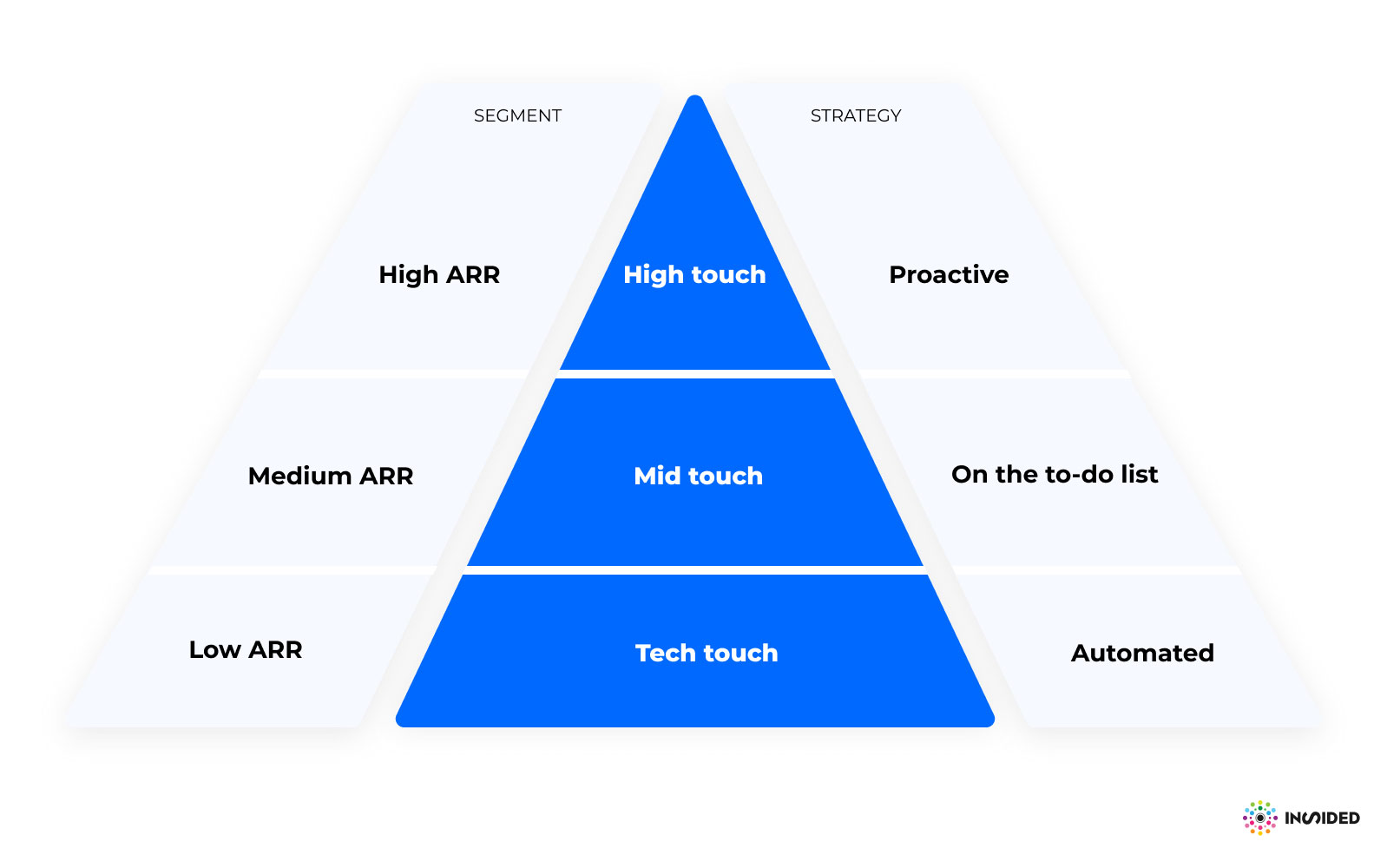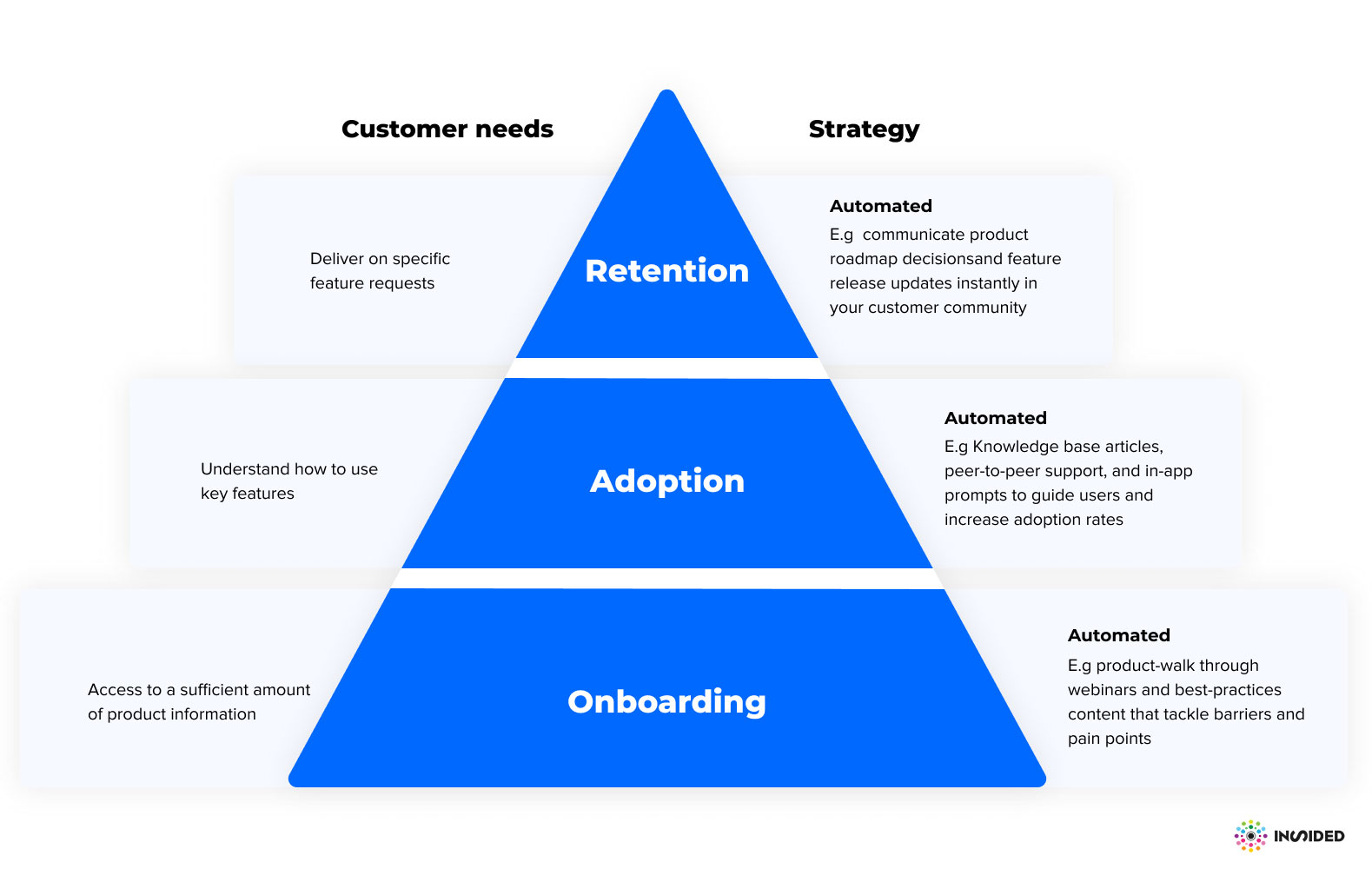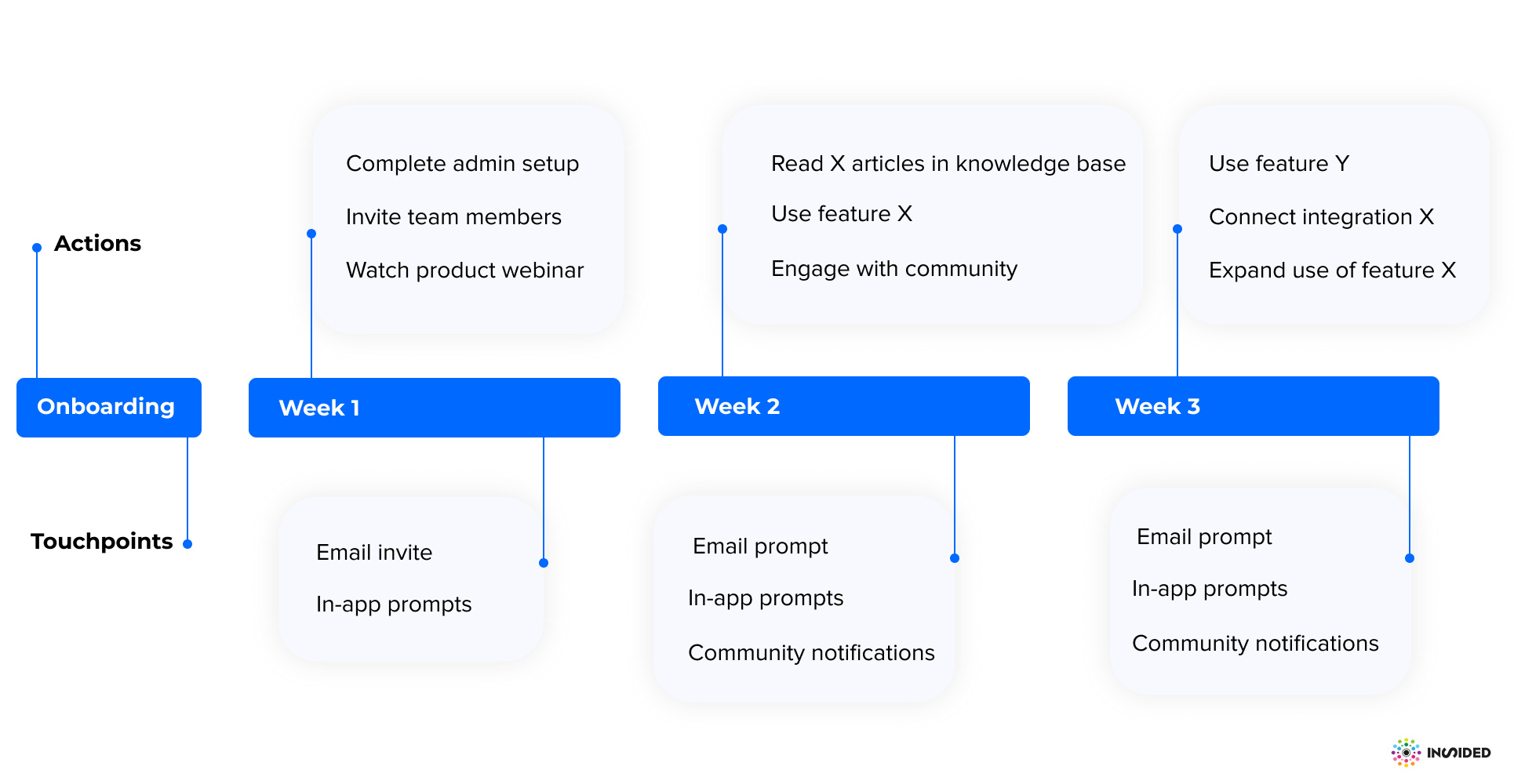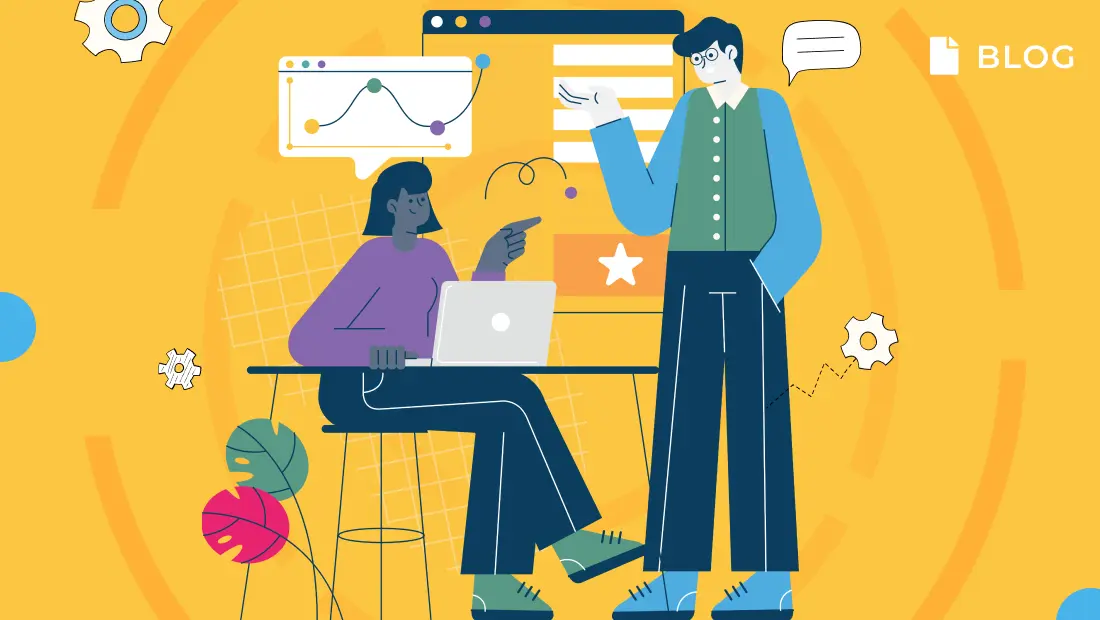Originally published on inSided.com on May 12, 2021.
Welcome to the second post in our new series, This is Digital Customer Success where we set out to get clarity on all things Digital CS. Last week, we started off by defining Digital Customer Success and explained how it’s different from “traditional” Customer Success. If you missed the post, head this way.
This week, it’s time to assess Digital Customer Success further. The way we see it, Digital Customer Success is made up of a number of core components that – when used effectively – allow CS teams to scale their efforts without adding headcount and, ultimately, help customers realize value, faster.
So what are those core components? Well, there are five of them. And in order for your digital-led Customer Success program to be a success, they all need to operate in symbiosis.
Let’s investigate.
The 5 components of Digital Customer Success
Digital Customer Success consists of five key components which all contribute to creating a personalized customer experience at scale:
- Personalization
- Automation
- Content
- Engagement
- Data
Let’s take a closer look at each. First up, personalization.
1. Personalization
Customers value personalization more than anything. Today’s customers expect personalized and targeted communication. It’s no longer a nice-to-have – it’s a must-have.
A common misconception is that personalization can’t exist in an automated, digital-led customer experience, or what’s in Customer Success typically referred to as a tech-touch approach. But that’s wrong. A digital-led strategy does not equate to removing personalization or delivering communication that doesn’t add value.
A well-executed Digital Customer Success strategy creates an experience that ensures personalized support is available to customers when it’s needed by, for example, utilizing in-app prompts, self-service features, or peer-to-peer support.
Historically, tech-touch strategies have been viewed as appropriate for only specific customer segments, such as those with lower ARR. When, in fact, this isn’t how you should be segmenting your customers at all. Instead, using a digital-led Customer Success strategy across the board based on their specific needs – that’s what personalization is really about.
See a simplified clarification between the two approaches below.
Image A. A traditional approach to segmentation based on ARR.

Image B. A digital-led approach based on the customer lifecycle stage and customer needs.

CSMs are busy with phone calls, emails, and meetings. They can’t be on standby 24/7 to help customers, and they don’t want to continuously repeat FAQs to customers. But a digital-led strategy can. CSMs exist to offer specialized support to help customers achieve their desired outcomes, but they’re not there to handle busy work. Instead, leave that job up to your digital strategy.
In the context of Digital Customer Success, personalization means delivering the right content at the right time, helping your customers to effectively solve problems, complete tasks, and move forward in their product experience.
Now, that personalization is powered by automation. Let’s explore.
2. Automation
In the context of Digital Customer Success, the idea behind automation is to deliver content that helps customers get more value from your product at the right time – it facilitates personalization and drives engagement.
This starts with looking at the customer journey and identifying the areas of engagement that can be automated in a way that amplifies the work your CSMs are doing. (Psst! We’ll dive into this in another blog post.)
It’s important to understand that a digital-led approach doesn’t eliminate the role of the CSM, instead, automated engagements exist to support their objectives, not replace them.
With that in mind, let’s look at an example.
You’re the VP of Customer Success for a SaaS company. You’re growing fast and while customers are encountering some challenges in the onboarding process, you also know exactly what actions they need to take to be successful during this process.
Knowing this, you map out the automated touchpoints that will guide your customer through the onboarding experience in a way that helps them realize value faster.
Here’s what that a simplified version of that could look like:

How and when you choose to apply automatic engagements will depend on the complexity of your product and how you triage customer actions throughout the customer lifecycle, especially in crucial stages like onboarding and adoption.
Now, let’s turn our attention to content. Your content, whether it’s your internal content or user-generated, can make or break the customer experience.
3. Content
Content is the lifeblood of your digital-led Customer Success strategy. Whether it’s delivered via email, in-app prompts, a knowledge base article, on-demand video, or your FAQs, content is what carries the strategy. Why? Because you can deliver videos with high production value or the most well-timed emails and in-app prompts, but if that content doesn’t resonate with the customer and their needs at the time, you might as well not do it at all. This is where Digital Customer Success operates with a mindset similar to their conversion-driven neighbor: marketing.
But this isn’t about marketing content. Customer Success has to take ownership of the content they need to deliver throughout the lifecycle stages. That means mapping out content needs and delivering that content in the right format.
So with that said, invest in content. And do so early. The best way to do that is by asking your existing customers and the customers you’re currently onboarding about their experience. What questions do they have? What challenges do they face? What stops them from achieving the actions you know will make them successful?
A digital-led process isn’t just about automated and targeted communications. It’s about providing customers with a central hub that facilitates self-service and peer-to-peer support and giving them access to answers and educational content 24/7.
So, we have personalization, automation, and content. But what’s going to drive your digital-led strategy comes down to one thing, and one thing only: engagement.
4. Engagement
While content is the lifeblood of your Digital Customer Customer Success program, engagement is your north star metric. And here, you want to take all touchpoints into consideration; from email open rates, CTR, and number of walk-through videos watched, to knowledge articles read, product usage, surveys, questions posted, feature requests created, and so on.
Why? Because this is what truly helps you understand the health and success of your customers. Customer engagement is what drives adoption, revenue, and ultimately defines the customer experience.
Remember how in the previous point we said that Digital Customer Success borrows a lot from marketing? That’s very much the case when it comes to engagement. For example, as a Digital CSM, you might want to send out an email based on engagement with certain topics or articles in your knowledge base. In terms of metrics, the first thing you’ll want to look at is open rates and click-through rates to understand how well-timed and targeted your content was. (Tech stack, KPIs, and channels are a huge part of Digital CS, but we’re saving that for another post!)
Ultimately, the goal is to better understand preferences and needs to continuously iterate on delivering the right communications at the right time, and treat customers how they want to be treated.
Now, engagement brings us to the backbone of your Digital Customer Success program: data.
5. Data
In a Digital Customer Success program, data is in the driver’s seat. Without data, you can’t make improvements to your digital-led strategy – let alone scale it.
While Customer Success teams may struggle with the 360-degree customer view, in a digital-led strategy, it’s not necessarily a do or die. By, as mentioned, focusing on the customer lifecycle stages and delivering what’s needed at the time, a 360-degree customer view (or lack thereof), isn’t the be-all and end-all for CS teams.
Instead, with the desired outcomes in mind, CS teams can look at data based on the lifecycle stage, their specific needs during that stage, and focus on meeting those needs by delivering the right content. But more importantly, measure the success of that content along with product usage by looking at engagement KPIs.
Before we wrap up, let’s revisit our definition of Digital Customer Success:
“Digital Customer Success is a data-driven methodology for creating value for customers at scale by using purpose-built tools that facilitate a personalized customer experience regardless of segment or lifecycle stage.”
Simply put, without data you can’t quantitatively measure whether you’ve created value or not.
Final words
There are a lot of moving parts in a Digital Customer Success program, no doubt about it. And while the goal is to marry the aspects of personalization, automation, content, engagement, and data, everything doesn’t have to happen all at once.
Start with the customer. Start with what you know. Building out v1 your Digital Customer Success program (especially with limited resources and budget) is not going to be a glamorous job.
And if you’re wondering when’s a good time to do it, Élisabeth Courland, DCSM at Talentsoft, sums it up perfectly in a recent podcast by Planhat: “The time is now.”
Our next blog post in this series will go live next week, subscribe to our blog to make sure you don’t miss it!
In the meantime, here’s some content you might want to dig into:

